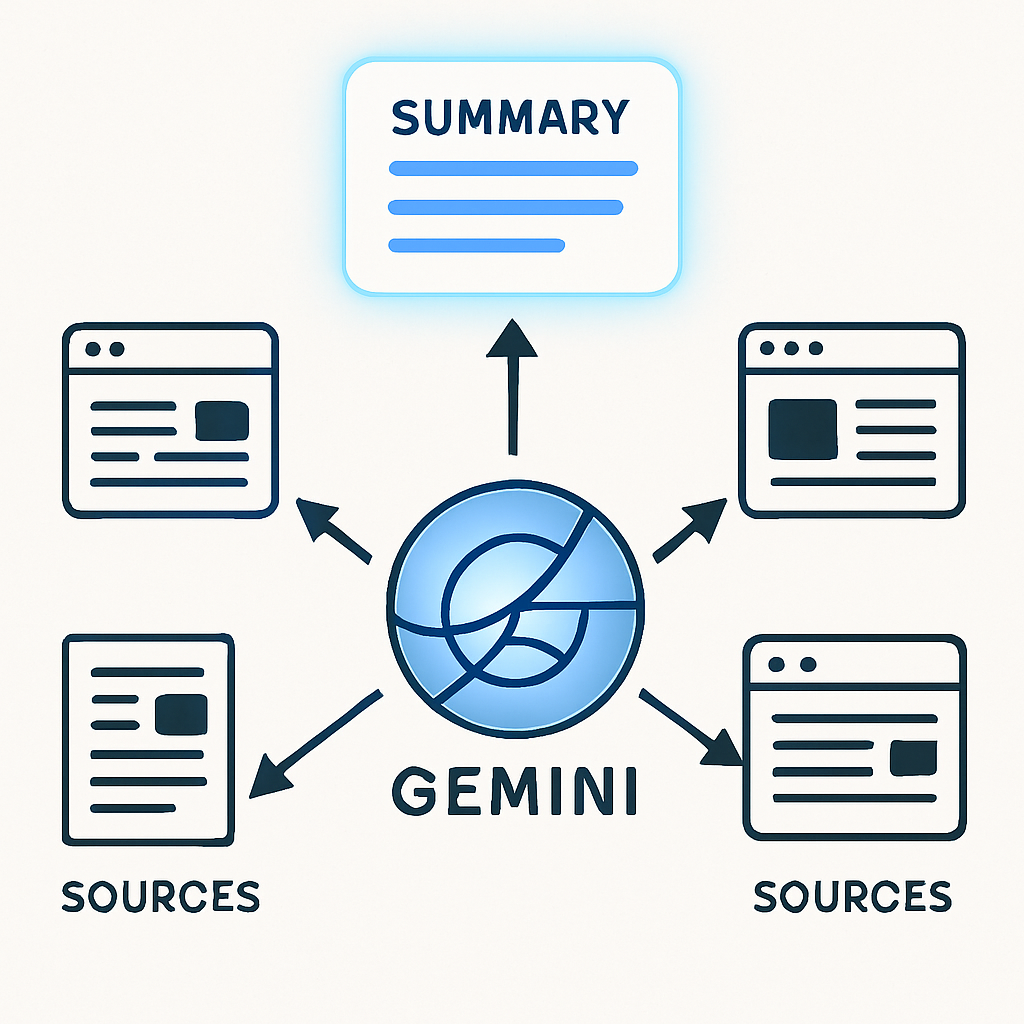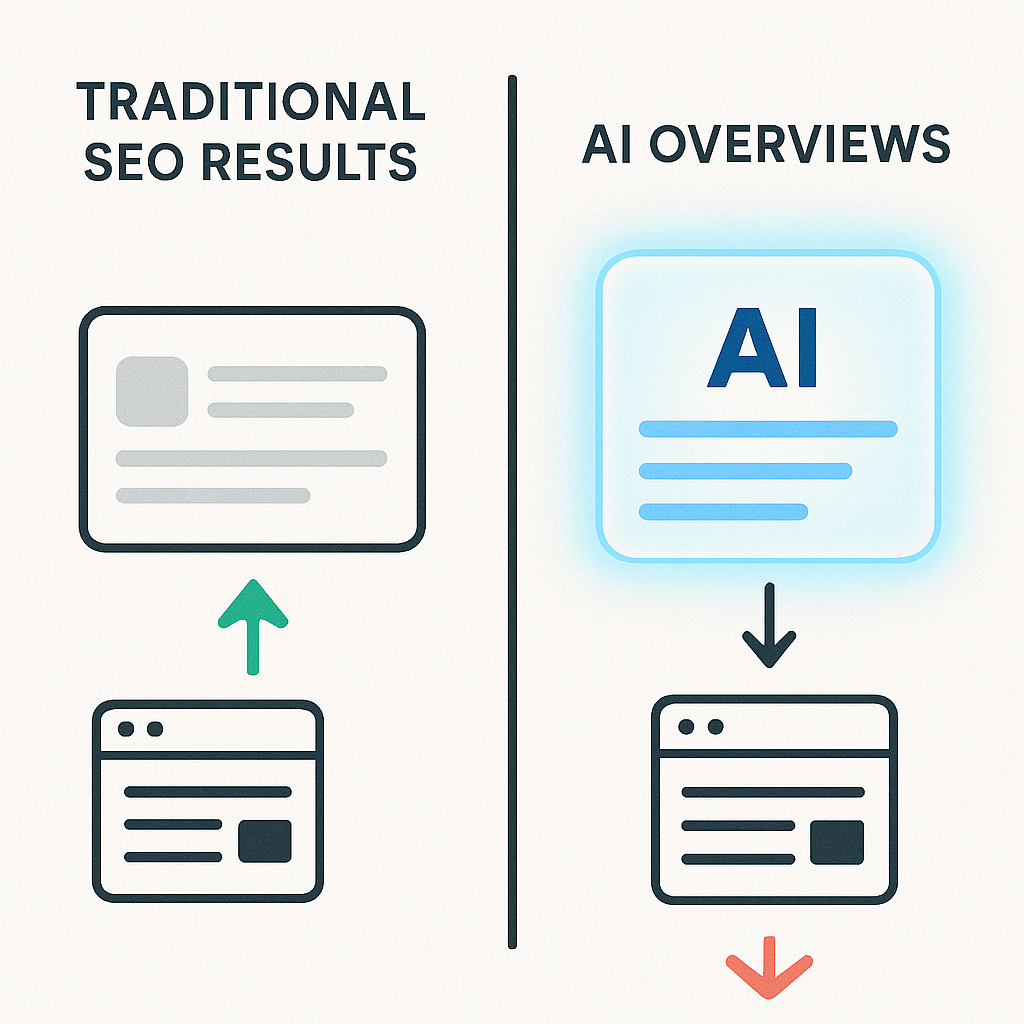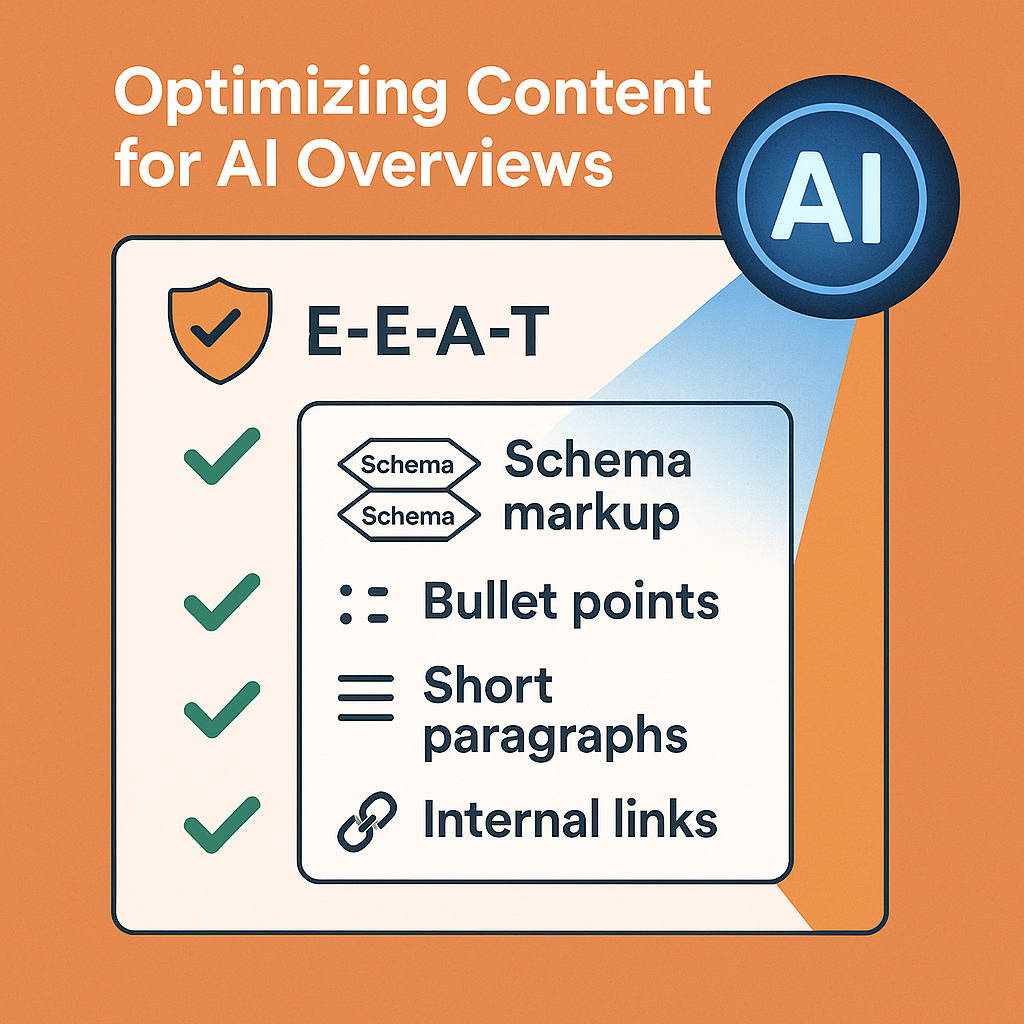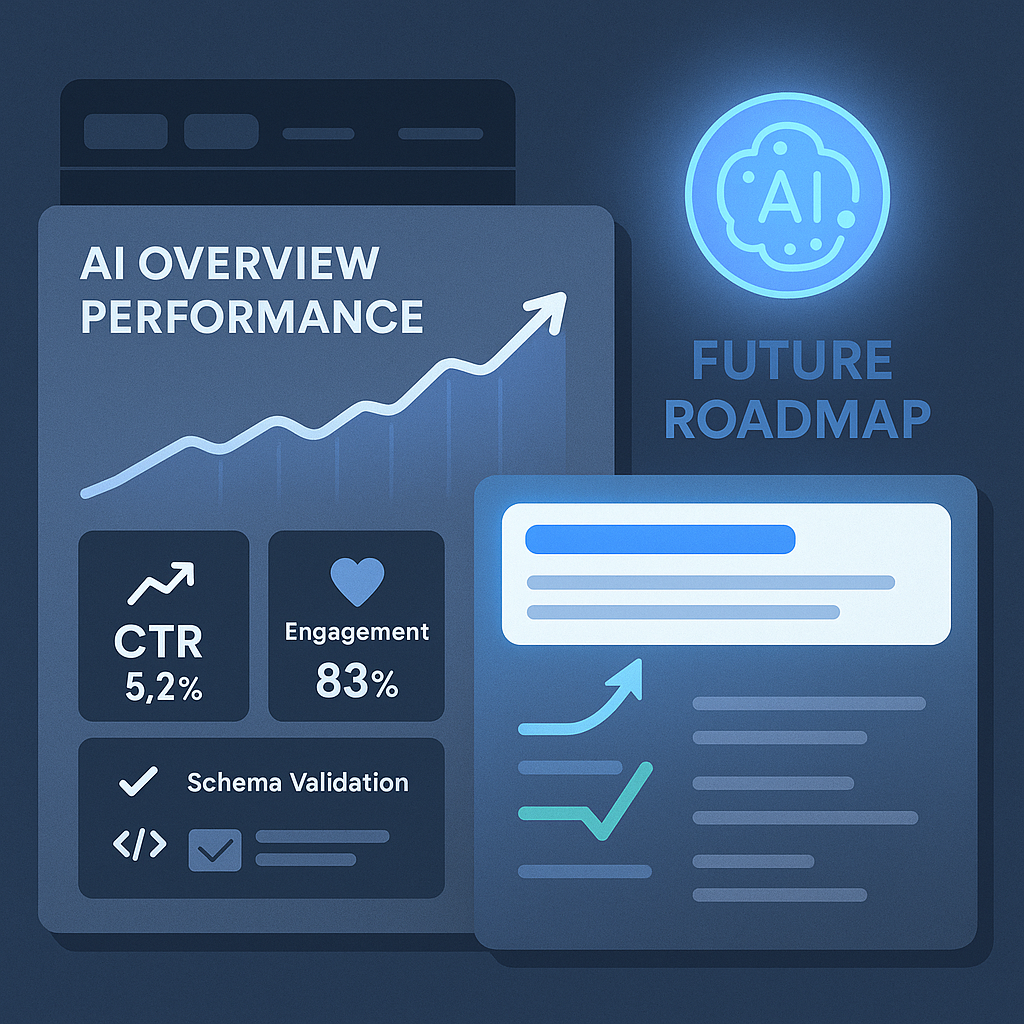
SEO Specialist
.jpeg)
AI overviews in SEO are changing how search engines display and rank content. This article covers how these AI overviews work, their impact on traditional SEO and how to optimize your content for them.

AI overviews are a game changer in SEO. Positioned above traditional organic search results these AI generated summaries aim to give quick and direct answers to complex questions, making the user experience better. The transition from the old Search Generative Experience to Google AI overviews is a strategic shift in search technology offering a new perspective on how search engines deliver ai generated summary information and overview rankings.
The main goal of AI overviews is to drive more user engagement by giving relevant information right at the top of the search results. SEO pros need to optimize for AI overviews to avoid traffic loss and reduced visibility. Being featured in an AI overview means authority and trust to both Google and users, that’s how ai overviews affect seo and why you need to follow SEO best practices.
AI overviews were rolled out to users in the US on May 14, 2024 and the goal is to reach 1 billion users by the end of the year. This fast roll out shows the growing importance of ai mode in SEO strategies.
This is an opportunity and a challenge for businesses. Including answer oriented sections that give quick and clear information increases the chances of being featured in AI overviews and getting a featured snippet.

Understanding how Google’s google ai overviews work is key to content optimization. Google’s AI overviews generate content by analyzing reputable results from various sources on the web, using Google’s Gemini language model to create highlights. This ensures the information presented is accurate and relevant, making the search experience better especially when using Google’s ai models.AI overviews show up when Google’s systems deem them helpful for specific queries, currently showing up for around 6.71% of searches in the US. These overviews are great for complex queries that may require multiple searches and informational queries that benefit from consolidated overview data. The inclusion of ads marked as ‘Sponsored’ within these overviews also signals a shift in how content may be monetized in the future, including how it may show up in google search results and the google shopping graph. Also ai overviews are one of the most effective tools to improve user experience.
The appearance of AI overviews in search results is not random. They show up when generative AI is deemed especially helpful, but they are shown infrequently. This selective display enhances organic visibility by giving a coveted spot in the most visible area of the search results page. SEO pros need to understand these mechanics to optimize for AI overviews.

AI overviews have changed traditional search results, especially in terms of click through rates and user engagement. Studies have shown that AI overviews can reduce clicks on traditional web listing organic listings, especially for informational queries. For example, the click through rate for position 1 listings can drop by up to 34.5% when AI overviews are present in search results.
This drop in click through rate is more pronounced for non branded search queries, resulting to higher drop off in user engagement. For keywords not in the top 3 positions, the decrease in click through rate can be as high as 27% when AI overviews are present. This has led to an increase in zero click searches where users find the information they need directly in the AI overview without clicking on any links, affecting overall search traffic.
Despite these challenges, AI overviews offer opportunities for more visibility. Web content that provides comprehensive and authoritative information with informational intent can potentially see an increase in visibility and click through rate.
But these cases are rare. SEO pros need to adapt to the impact on traditional organic results. Overall the presence of AI overviews requires a reevaluation of SEO strategies to stay visible and engaged, which can affect seo.

Optimizing for AI overviews is crucial to stay visible and drive traffic in this changing SEO landscape. Businesses need to follow SEO best practices and focus on high quality content to increase the chances of being featured in AI overviews. This section will cover key strategies to optimize content including creating authoritative content, structuring for AI recognition and using structured data and schema markup.
Creating high quality, authoritative content is the foundation of good SEO. This means following Google’s E-E-A-T guidelines:
Structuring content in a way that AI can recognize, such as using clear headings and answer oriented sections can increase the chances of being featured in AI overviews. Using structured data and schema markup helps to organize content for better visibility and matching by search engines.
Implementing these strategies will increase the chances of showing up in AI overviews and keep content visible and relevant in the evolving seo strategy.
High quality, authoritative content is key to AI overview optimization. Google prioritizes relevant content that follows its E-E-A-T guidelines—Experience, Expertise, Authoritativeness, and Trustworthiness. This means the information provided is reliable and valuable to users and increases the chances of being featured in AI overviews.
Directly answering user queries within the content is crucial for AI overview optimization. For YMYL (Your Money or Your Life) topics consider the following:
Making your existing content accessible and indexable is another key factor. Engage with client facing team members to stay updated on industry trends and ensure your content resonates with current user needs. Focusing on high quality, authoritative content will attract more qualified traffic and increase the chances of being featured in AI overviews.
Effective content structuring is important for better AI recognition. Google’s AI overviews prefer content that is easy to skim and digest, by:
Focusing on these structural elements will improve content readability and skimmability and increase the chances of showing up in AI overviews and user engagement.
Another strategy to optimize for AI overviews is to use structured data and schema markup. Structured data helps search engines to understand the organized information about your content and potentially get citations of specific articles in AI overviews. Common types of structured data are:
To make sure your structured data is implemented correctly you can use Google’s Schema Markup Testing Tool and Schema.org’s markup validator to find any issues. You can also check the structured data on your website through Google Search Console to find areas for improvement.
Using structured data doesn’t guarantee to show up in AI overviews but it increases the chances of matching and overall SEO performance. By using structured data and schema markup businesses can better organize their content for AI driven search.
User intent experience is key to optimizing for AI overviews. AI overviews are designed to satisfy user intent by providing a summary and links to more information. This added value encourages users to explore multiple sources for more information beyond traditional search results.
Key aspects of user experience that impact AI overview performance are:
Make sure your website is mobile friendly and loads fast and you will increase user engagement and chances of showing up in AI overviews.
The synergy between SEO and user experience is clear, as better user experience can lead to better rankings and longer user stays on your site. Focusing on these elements will allow businesses to provide a seamless user experience and optimize AI overview performance.

Tracking and measuring AI overview performance helps to understand the effectiveness of SEO strategies. Having well defined KPIs for AI initiatives will help to track progress and tie performance to business objectives. Use a mix of business impact and technical performance metrics.Regularly updating performance metrics will keep you aligned with your organization’s needs and help you identify areas for improvement. Automated dashboards providing real time insights into performance metrics will help you monitor AI performance continuously. Also using A/B testing will give you practical insights into which AI models perform better based on user interactions and feedback.
Combining quantitative data and qualitative insights will give you a better assessment of AI output especially on user experience and engagement. This will ensure AI overview performance is always optimized and aligned to business goals.
Addressing common concerns and misconceptions about AI overviews will maintain trust and transparency. AI overviews are generally as accurate as featured snippets although not always 100% accurate. SEO professionals worry about the precision of AI generated content and attribution of sources.
AI hallucinations are where AI provides nonsensical or incorrect information which can impact user trust. Blocking content from showing up in AI overviews will affect its visibility in organic search results, that’s why it’s important to optimize for AI overviews. There is no way for users to opt out entirely from AI overviews.
Addressing these concerns and misconceptions will help businesses prepare for the challenges and opportunities brought by AI overviews and keep content visible and trustworthy.
The future of AI-powered search is still evolving and businesses need to adapt to these changes. AI overviews will expand over time and will integrate more into search results and change the SEO landscape. The long term SEO impact of AI overviews is yet to be determined so we need to keep assessing and adapting.
To stay competitive businesses will need to embrace and optimize for the changing AI search tools. This means staying up to date with best practices, understanding the nuances of AI driven search and continuously refining SEO strategies to match the new search engine technology.
By preparing for the future of AI-powered search and understanding search intent while searching businesses will be ahead of the curve and stay visible and relevant in the ever changing digital landscape.
In summary, mastering AI overviews in SEO requires understanding how they work, their impact on traditional search results and how to optimize. By creating high quality authoritative content, structuring it for better AI recognition and using structured data businesses can increase their chances of showing up in AI overviews.User experience and performance tracking is also important for AI overview optimization. Addressing common concerns and preparing for the future of AI-powered search will keep you competitive and visible in the SEO landscape. With these strategies you can navigate the challenges and opportunities of AI overviews and be ahead in the digital age.
AI overviews in SEO are features that show AI generated responses above regular search results to give users quicker access to answers. This improves the overall search experience by answering complex questions more efficiently.
Google’s AI overviews use the Gemini language model to analyze and synthesize information from trusted sources and show summaries when deemed useful for a particular query. This makes the user experience more relevant and efficient.
AI overviews will reduce traffic to traditional organic listings by making zero click searches for informational queries although they may also increase visibility for specific content types. This is a sign of changing search behavior.
To optimize for AI overviews focus on producing high quality content and make sure it’s well structured. Also use structured data and schema markup to improve AI recognition and visibility in search results.
To track and measure AI performance set clear KPIs, use multiple metrics and automated dashboards for real time analysis. Also use A/B testing to know how different models perform based on user interactions.